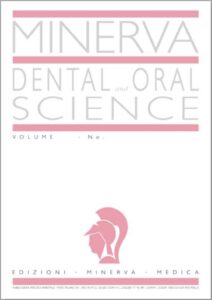Publications

Biomechanical properties of masseter muscle assessed through myotonometry in patients with temporomandibular disorder treated with ultrasound therapy: a randomized comparative study
Authors: Sebastian Szajkowski 1, Jaroslaw Pasek 2, Michal Dwornik 3, Grzegorz Cieslar 4
Affiliations:
- Faculty of Medical and Social Sciences, Warsaw Medical Academy of Applied Sciences, Warszawa, Poland
- Collegium Medicum im dr Wladyslawa Bieganskiego, Jan Dlugosz University, Czestochowa, Poland
- Center of Medical Rehabilitation and Osteopathy Reha Punkt, Piastow, Poland
- Department of Internal Medicine, Angiology and Physical Medicine, Faculty of Medical Sciences in Zabrze, Medical University of Silesia in Katowice, Bytom, Poland
Journal: Minerva Dental and Oral Science - February 2024, Volume 73, Issue 1, Pages 45-52 (DOI: 10.23736/s2724-6329.23.04855-6)
-
Field & Applications:
- Medical
- Treatment evaluation
- Temporomandibular disorder
- Orofacial muscles
Backgound: The aim of the study was to make an objective quantitative assessment of effectiveness of procedures with the use of a therapeutic dose of ultrasounds in this nosological entity, in connection with improved biomechanical properties and alleviation of pain experienced in masseter muscles.
Methods: The study included 40 patients with temporomandibular disorder. In group 1 (N.=20) ultrasound therapy (1.2 W/cm2) was carried out, while in group 2 (N.=20) sham therapy was applied. A total of 10 procedures were performed. Myotonometric measurements and assessment of pain intensity were carried out before treatment and after the completion of procedures.
Results: The analysis revealed a significant difference (P=0.011) between the values of decrement (D) measured on day 0 (2.08±0.45 [log]) and day 4 (1.80±0.55 [log]) in group 1. In group 2 no statistically significant differences were noted between the results obtained on consecutive days of the therapeutic cycle. A statistically significant difference in values of decrement (D) between group 1 (1.80±0.55 [log]) and group 2 (2.23±0.51 [log]) was noted on day 4 of the experiment (P=0.021). Both in group 1 and in group 2, a statistically significant reduction of pain intensity (VAS Scale) was obtained.
Conclusions: The masseter muscle was more elastic during ultrasound therapy. However, the effect was transient. The analgesic effect was also observed in the control group; therefore, a placebo effect cannot be excluded.
Keywords: physical therapy modalities, therapeutics, ultrasonic therapy, temporomandibular joint disorder
Therapy with the use of ultrasounds causes moderate improvement of biomechanical properties in masseter muscle during TMD, assessed by means of myotonometry. The masseter muscle was more elastic during ultrasound therapy cycle. However, the effect was transient and concerned only the initial stage of treatment. The effects noted were not durable, though. The muscle tone and stiffness did not change significantly during treatment. In the group of patients treated with ultrasounds, a more substantial reduction of pain intensity was observed, in comparison with patients undergoing sham therapy. Ultrasound therapy can be considered as a potent and therapeutic modality in relieving pain. The significant analgesic effect was also observed in the control group; therefore, the placebo effect cannot be excluded. The study showed that therapy with the use of ultrasounds was not an effective treatment method for improving biomechanical properties of masseter muscle in patients with TMD. When planning physical therapy, efforts to reduce the muscle tone and stiffness are expected to help improve the functioning of masseter muscle, therefore other methods of physiotherapy should also be considered. A potential benefit of myotonometry in the clinical practice is its ability to assess the biomechanical properties of masseter muscle quickly, easily and reliably during TMD. We hope that the results of our study can provide reference values for studies in such fields.


